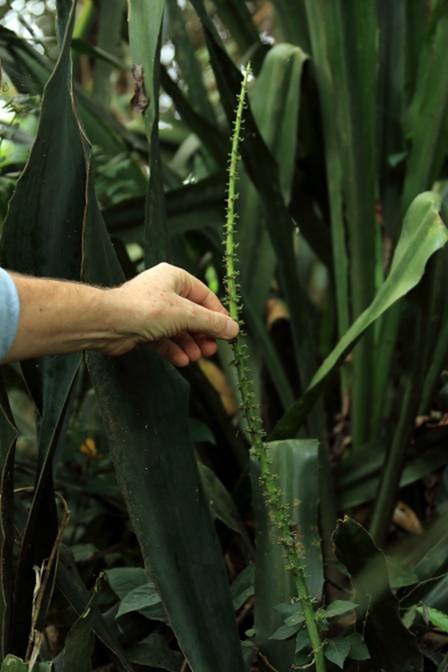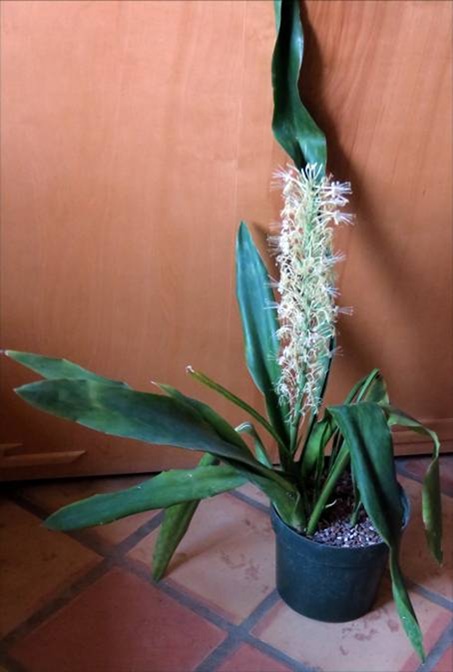| |
Sansevieria dawei Stapf |
| Protologue: |
Journal of the Linnean Society-Botany 37: 529 (1906). |
| Etymology: |
This species is named for Morley T. Dawe, a British forester and horticulturalist who was Curator of the Entebbe Botanical Garden in Uganda. |
| Subgenus: |
Sansevieria |
| Group: |
Sansevieria dawei |
| Distribution: |
Kenya, Uganda, and Burundi. |
| Brief Description: |
Another acaulescent and rhizomatous broad-leaf species, Sansevieria dawei has 2 - 3 ascending or suberect, lanceolate leaves that are 60-150 cm in length and 5.7-11 cm wide. The leaves narrow from below the middle downwards to a long or short channelled petiole, and the tip is soft but acute. The leaves, smooth on the top and slightly rough on the bottom, are a dull dark-green color, sometimes with a glaucous sheen, and mottling and banding ranges from none to obscure to prominent. The margin is reddish-brown and non-shredding. The inflorescence is 45-75 cm tall and simple with 3 - 4 flowers per cluster. |
| Similar Species: |
Sansevieria dawei is closely related to Sansevieria nilotica and Sansevieria subtilis, and the type locality of the former is close to that of S. dawei south of Kampala, Uganda. Sansevieria nilotica is the smaller of the two species and has shorter, narrower leaves that tend to be more yellow-green in color. Sansevieria dawei, which has dark leathery green leaves almost without blotches or banding at its type locality, has forms in cultivation that are decorated with numerous blotches and forms that have narrow, plain-green leaves. It is possible that Sansevieria dawei could be mistaken for Sansevieria frequens, but that species tends to have shorter leaves. |
| |
| |

Sansevieria dawei at its type locality near Entebbe, Uganda.
|
| |

Sansevieria dawei flowering in cultivation.
|
|
| |
| |
|
|
| |
| |
|
|

